Earlier this week, I took delivery of a new Xiegu G90 general coverage QRP transceiver. I’m reviewing this portable rig for The Spectrum Monitor magazine. Although this Chinese manufacturer has been around for a few years, this was my first purchase of a Xiegu product.
I’ve had the G90 on the air from home for a couple days, but I feel like the best way to test a QRP transceiver is in the field!
Due to the Covid-19 lock-down and a number of our regional parks either being closed or severely limiting visitors, I haven’t made many POTA (Parks On The Air) activations this year.
Recently, however, North Carolina has been opening state parks and allowing visitor access to hiking trails and picnic areas, but keeping all facilities (stores, cafes, visitor centers, and restrooms) closed to the public.
Yesterday, our family decided to pack a picnic lunch and head to Mt. Mitchell State Park (POTA site K-2747). My wife knew I was chomping at the bit to play radio in the field and actually made the suggestion. (She’s a keeper!) 🙂
There were only a dozen people at the park so we essentially had the place to ourselves. Better yet, it gave me the opportunity to pick out the most ideal picnic site to set up and deploy my EFT Trail-Friendly 40/20/10 antenna.
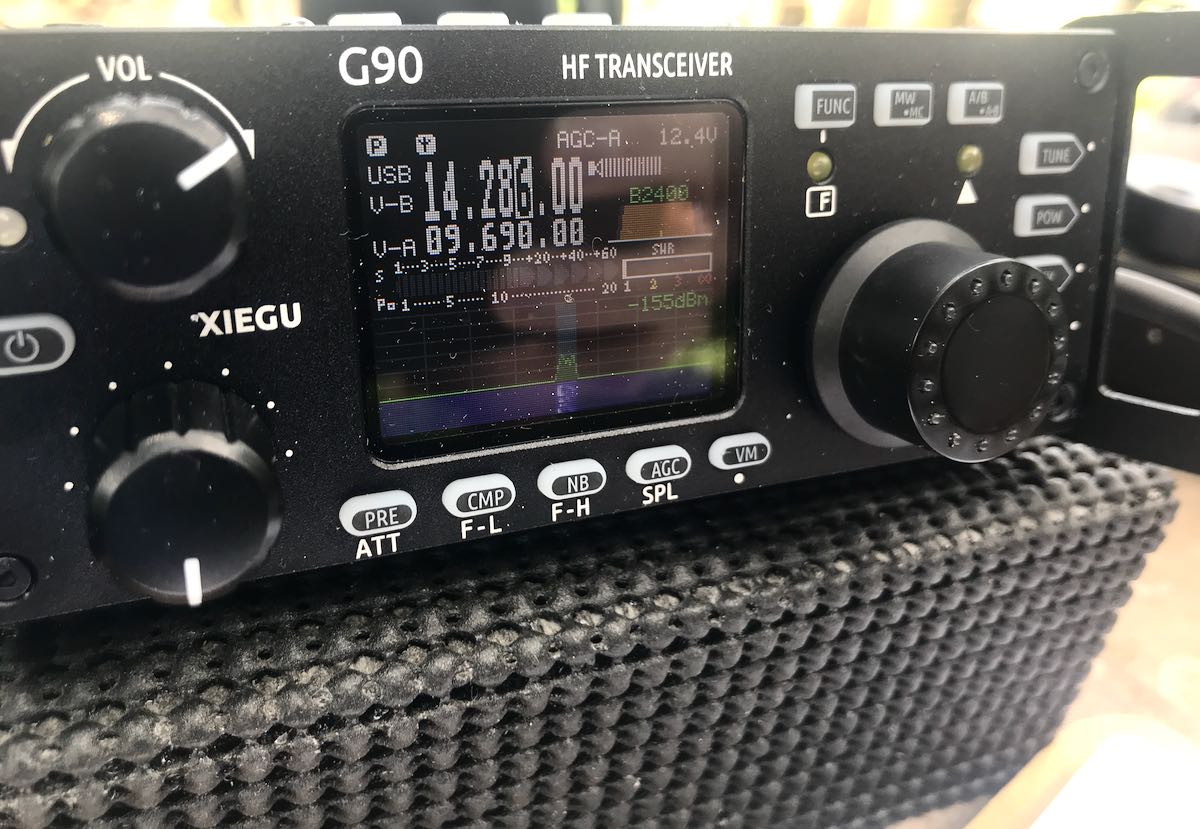
The G90’s backlit color display was actually quite easy to read in the field. My phone’s camera filter made it look darker than it actually was.
My POTA activation was unannounced and I didn’t have Internet access to self-spot on the POTA website, so I started the activation old school by calling “CQ POTA” until someone happened upon 7286 kHz.
After perhaps 10 minutes of calling CQ, Greg (KE0HTG)–a helpful POTA chaser–finally found me and spotted me on the network.
I worked a few stations in succession, but summer QRN levels were incredibly high and I believed static crashes were cloaking would-be contacts. The G90 has no RF Gain [Actually, thanks to this feedback, I now know the G90 does indeed have an RF Gain control (firmware version 1.73 and higher).] I asked one kind operator if he would hold while I switched over to my trusty Elecraft KX2.
The KX2 did a much better job managing the noise and that same op was easily readable where with the G90 I could barely copy him. I suspect I could have tinkered with the G90’s AGC levels to better mitigate the noise, but I didn’t want to do this in the middle of an activation.
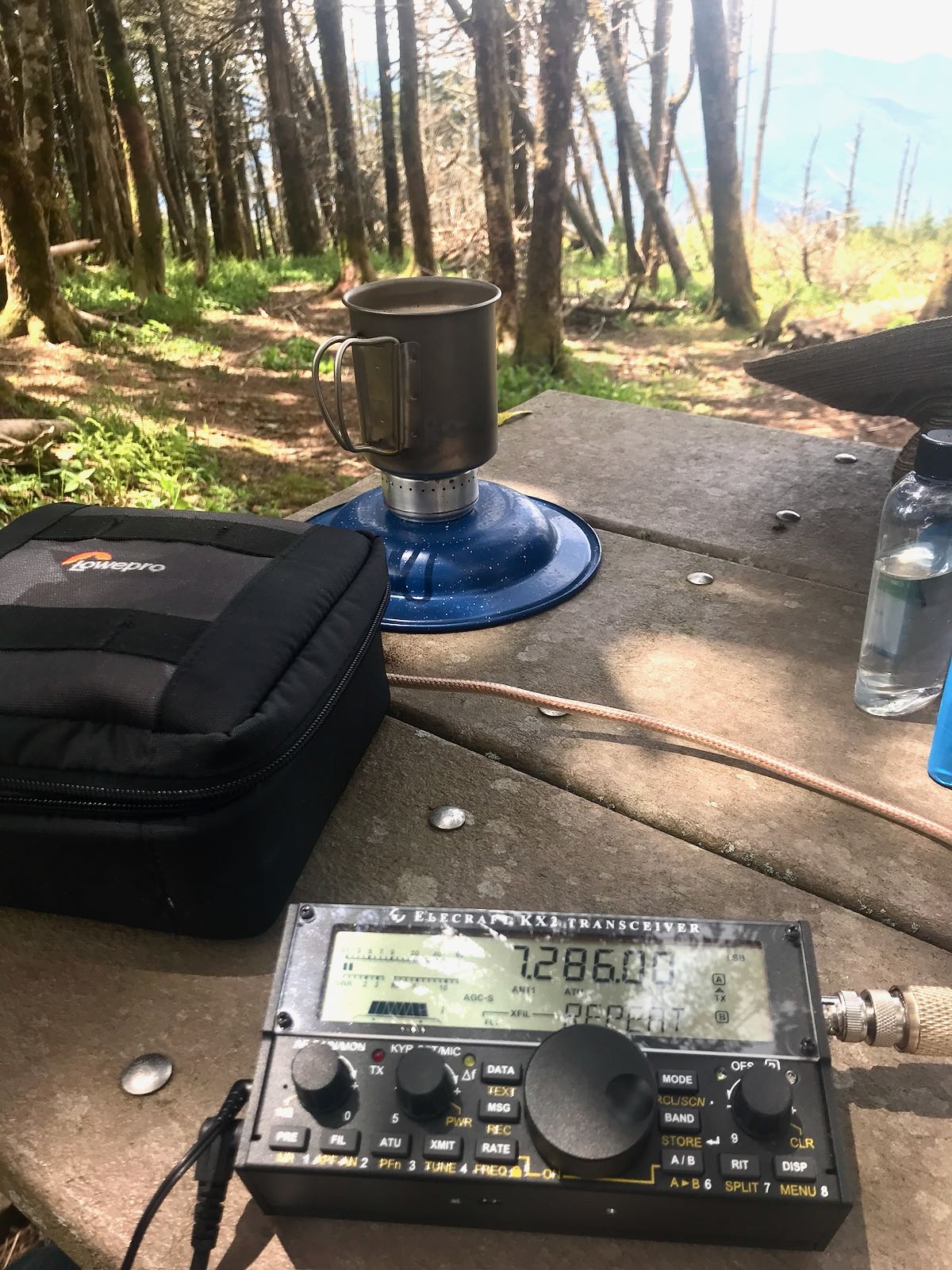 I worked about fifteen stations with the Elecraft KX2 on 40 meters.
I worked about fifteen stations with the Elecraft KX2 on 40 meters.
One real advantage of the KX2 during a POTA activation on SSB is its voice memory keyer (of course, it also has a CW memory keyer). I simply record my CQ and have the KX2 repeat it until someone replies, then I hit the PTT to stop the recording. Not only does this save my voice, but it also gives me an opportunity to eat my lunch while calling CQ!
I eventually moved up to the 20 meter band and switched back to the Xiegu G90.
On the 20 meter band, the G90 handled conditions like a champ.
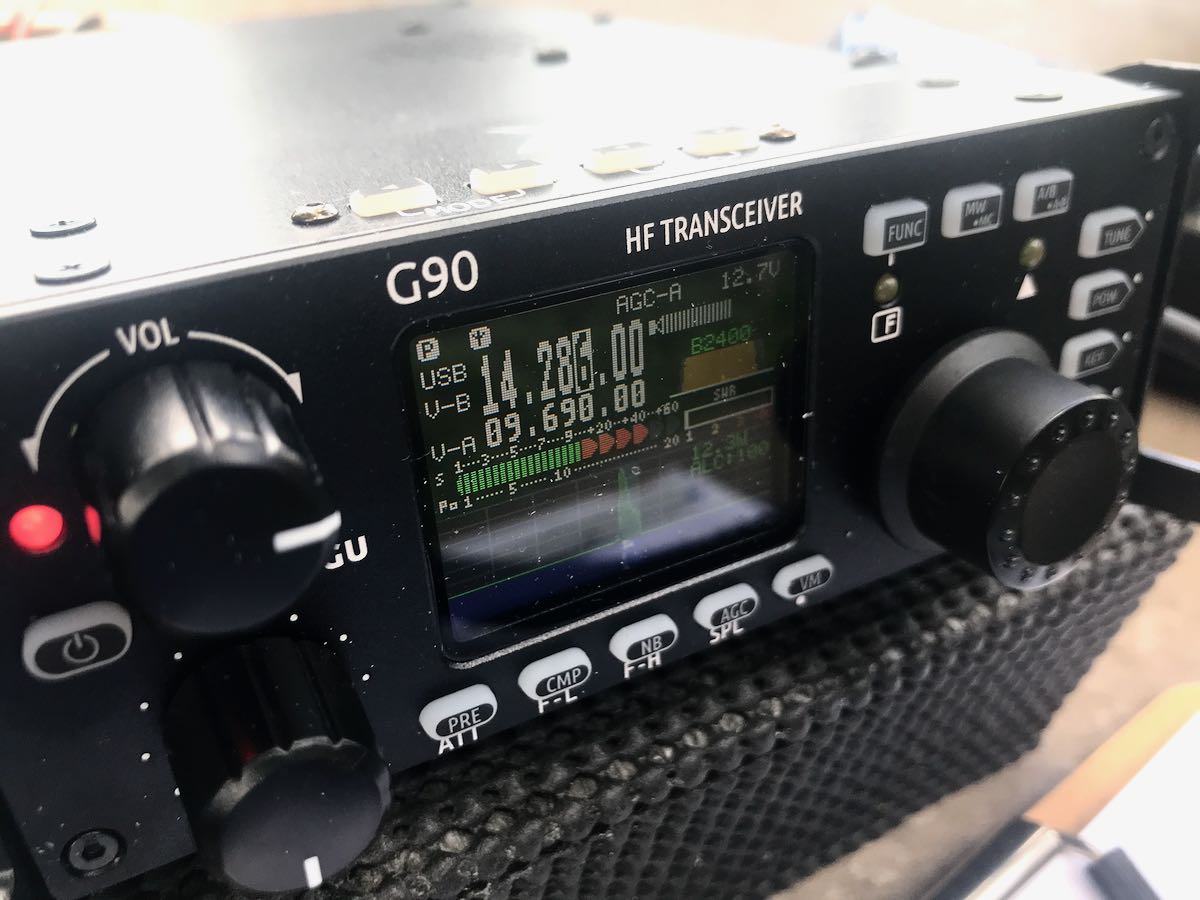 Someone eventually spotted me on 20 and I worked a few stations.
Someone eventually spotted me on 20 and I worked a few stations.
The 20 meter band was very fickle and unstable yesterday. For example, I struggled to finish a contact with an operator in Massachusetts, yet got a solid 59 report from Spain with only 20 watts.
I had a great time with the G90 in the field. I can see why it’s become such a popular transceiver as it offers incredible bang-for-buck (it can be purchased new as low as $450 US shipped).
This week, the noise levels on the 40 meter band should be very high here in North America, so I plan to spend more time with the G90 settings and see if I can mitigate the QRN a little better. I’d welcome any tips from G90 owners.
And yes, I’m already eyeing a couple of parks to activate next week!
Post Readers: Please comment if you’re familiar with the Xiegu G90 or any of the other Xiegu transceivers.
Do you enjoy the SWLing Post?
Please consider supporting us via Patreon or our Coffee Fund!
Your support makes articles like this one possible. Thank you!

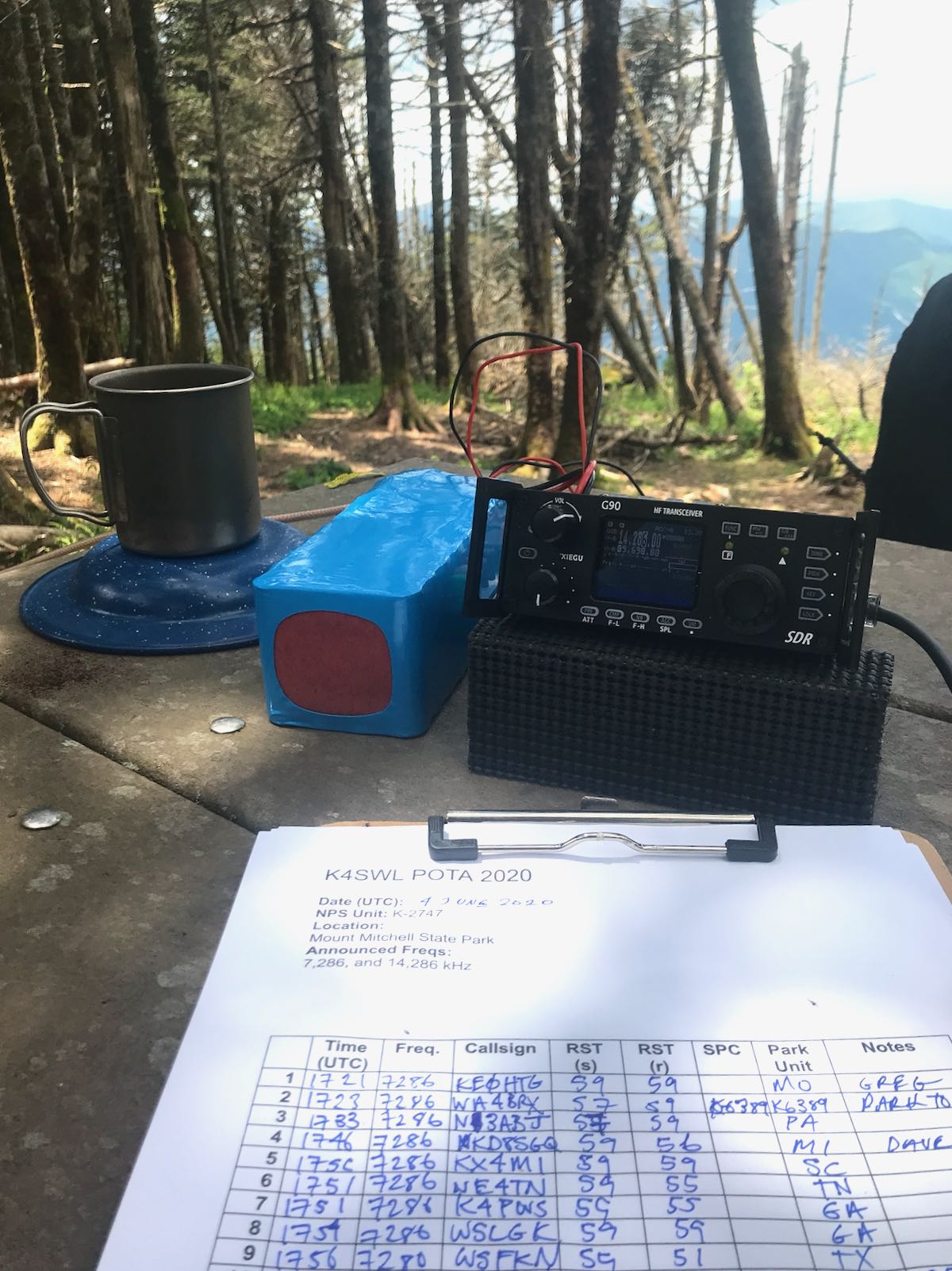
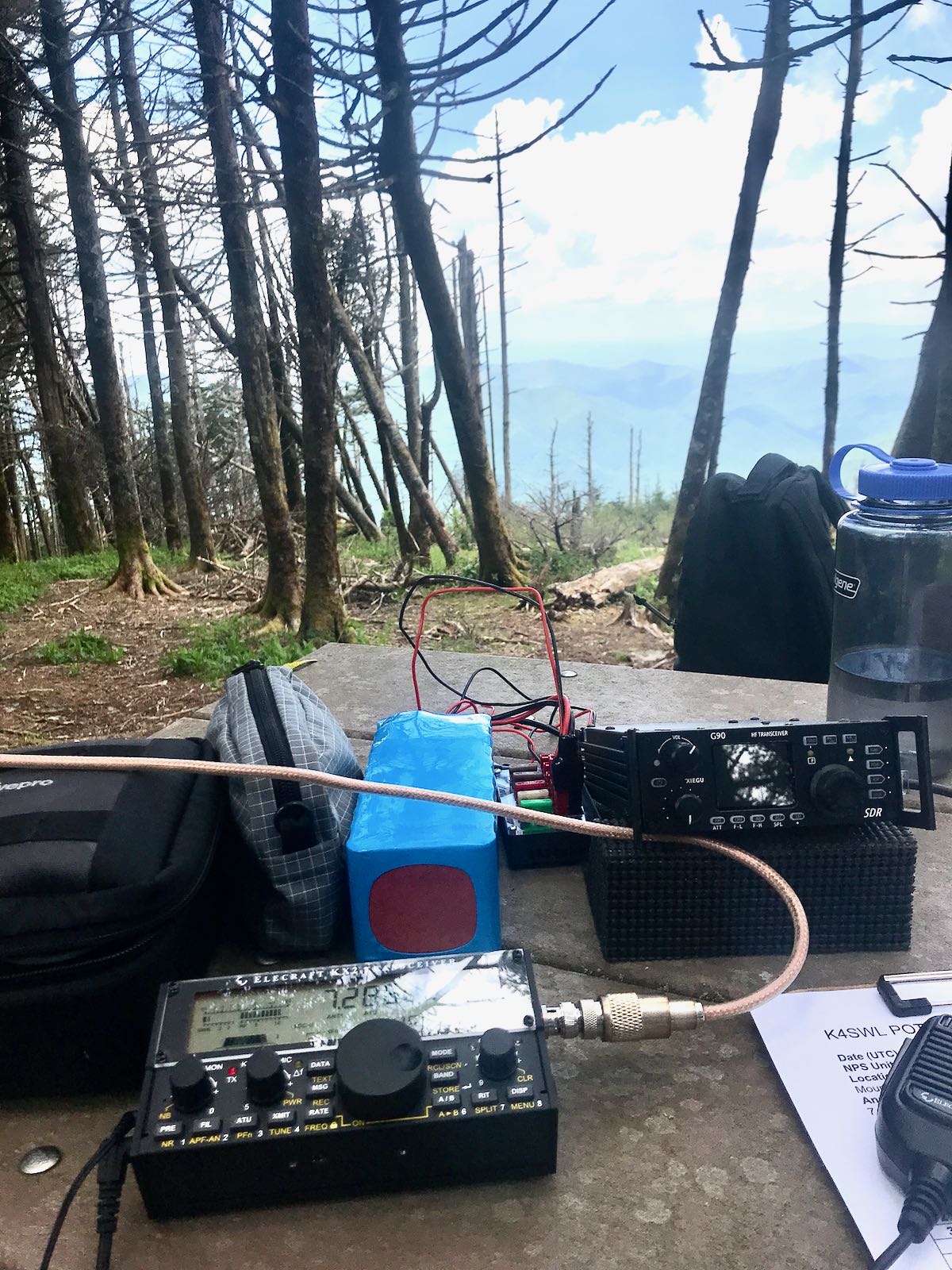

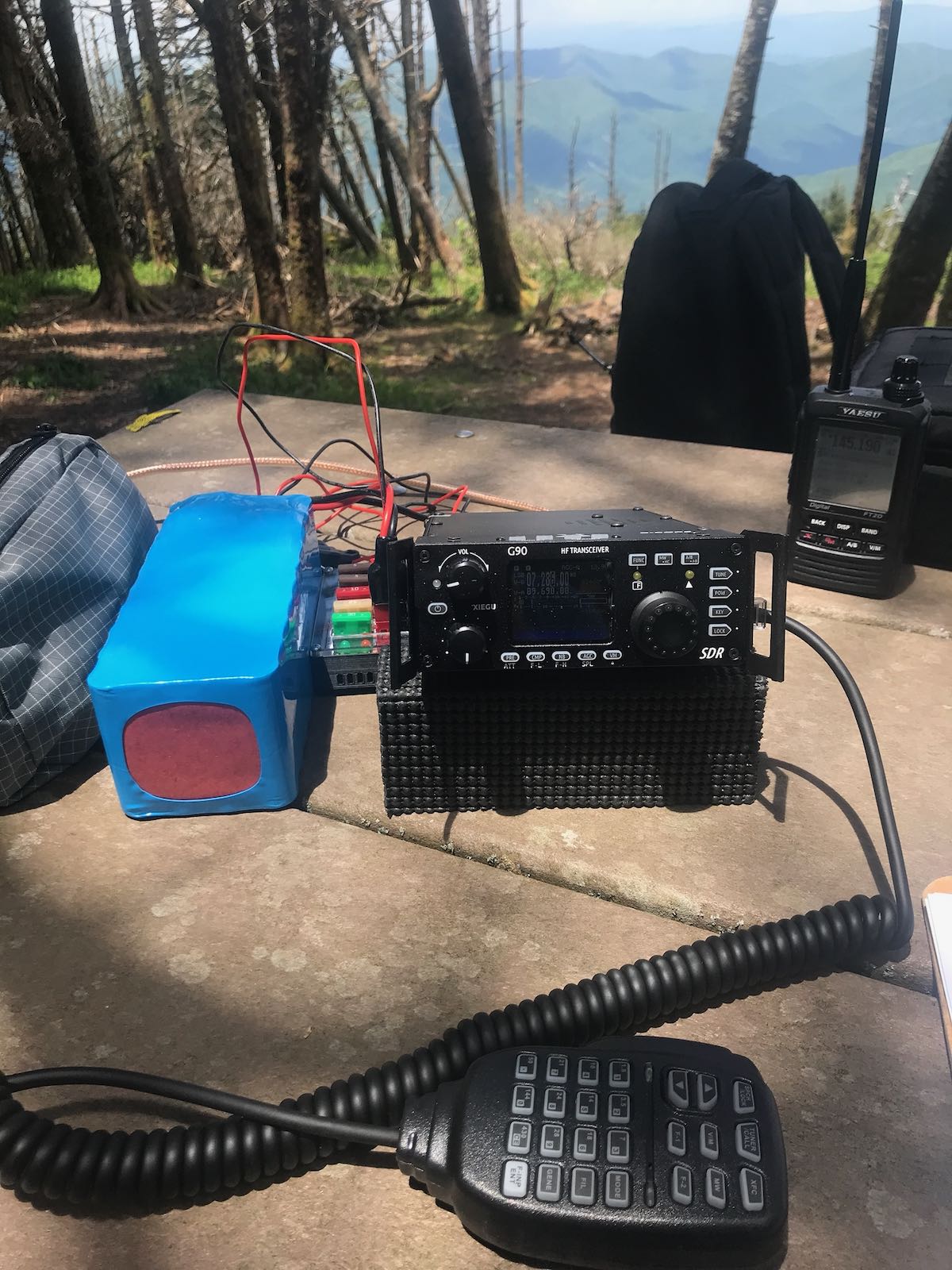

I’m considering the G90 as my first HF radio, mainly for SOTA activations. Could you share what type of battery did you use and how did you connect it to the Xiegu?
Hi, Janek,
The G90 ships with a power cord that is pre-terminated with Anderson Power connectors. I can’t remember if that power cord is fused (at present, I’m visiting family and don’t have it with me).
If you reference this photo:

The power cord is plugged into a Powerpole distribution panel that it fused. There are a number of panels on the market. This is the one I use, but I also recommend this affordable one.
For a battery, in this photo I’m using a 15 aH Bioenno LiFePo battery. It’s way, way overkill for a SOTA activation! You could easily get by with a 6 aH battery. I highly recommend LiFePo batteries–they’re stable, have excellent capacity, and a great built-in charger.
I might turn this comment into a post. Last week I received a similar question via email.
Cheers,
Thomas
Thanks a lot for the swift response! I’ll check these solutions, but it would be great to read more about it in a separate post.
“cq”, “cq”, “cq”, “cq”, “cq”, “cq”,………
Ahhhh!
What a rush,
Thanks Thomas for the top to the RSS feeds.
I have the Xiegu G90 but it fails miserably on Ergonomics, the buttons are poor and it’s a little frustrating to use.
Filters are ok but it lags behind my FT-891 + the IF shift and contour on the 891 shine in noisy conditions with lots of QRM. + the 891 is naturally a quieter receiver than a lot of these newer SDRs including my IC-7300. The DNR on the 891 is amazing, there’s no such thing as noise reduction at all on the G90.
The G90 also has a decent internal tuner, the FT-891 is just so much better, forget the tiny screen on the G90, it’s useful but it won’t allow you to hear stations better and the 100 Watts of the 891 is really convenient to have when you need it, better to have it than want it.
The FT-891 TX Audio is also better and you can adjust the EQ in the menus, yes the menus are plenty but most are set and forget and the most frequent used can be preset to the buttons on the radio, pretty cool.
Receive Current is about 0.5 amps for the G90 and 0.9 amps for the 891, not much of an issue for me with modern Li batteries. I use a 8.4 Ah 4S LiFeP04 from Hobby king and can charge it in 40 mins @ 15 amps on my RC battery charger.
If you’re thinking about the G90 because of the screen and internal tuner then give the FT-891 serious consideration, it’s a very under rated radio with a great receiver and can be got at a decent price 2nd hand and a external tuner such as the MFJ-939 which is a really great auto tuner.
I’m considering selling my G90 now because I hardly use it.
It’s a pity you don’t get notifications to posts you make here on swling!
I would well believe the Elecraft KX2 could pull a signal out of the noise a lot better than the G90, the Kx2 and Kx3 have one of the best receivers out there and I recently saw a youtube video where the Kx3 wiped the floor with a IC-7300 on a noisy band, I have the 7300 and it is a pretty noisy receiver, the FT-891 has a quieter receiver.
Hi, Mark,
Our friend and contributor, Robert Gulley, is also a huge fan of the FT-891. I have never operated one, but it’s certainly on my list! Looks like with coupons, it’s only $610 via Universal Radio new: https://www.universal-radio.com/catalog/hamhf/0891.html
Regarding notifications, do you mean you’re not notified when new posts are made? If so, you can subscribe to our RSS feed through and RSS reader, or get email summaries via Feedburner: http://feedburner.google.com/fb/a/mailverify?uri=TheSwlingPost&loc=en_US
Cheers,
Thomas
I own both the FT 891 and the G90 and I believe they each have their strengths and weaknesses and serve different missions. The 891 has the edge on RF output, but also consumes almost twice the power on receive. That requires heavier battery for same time of operation. If you are backpacking doing SOTA, this can be significant. If you are picnic table portable, not a big deal. The G90 has an antenna tuner, antenna analyzer and waterfall display, neither present on the 891. After signal hunting with a real waterfall display, you miss that using the 891. Yes, the 891 has a spectrum display, but it is barely useful. Where the 891 shines is in power and DSP. It has some of the best DSP by far without question. If you are trekking about or doing SOTA, get the G90. If are doing field day out of your car, either choice is fine.
Hi Larry, regarding SOTA, I can get several hours with an 8.4 Ah LiFeP04 battery even at 100 watts with the FT-891.
THe receiver is just so much better on the 891, the waterfall on the G90 won’t allow me hear signals better.
The ergonomics of the G90 are also poor, the 891 speaker sound isn’t the best though, I listen via headphones as with most radios,, via headphones the 891 sounds great and that IF shift, Contour and filtering in general not to mention DNR makes the 891 a far better rig.
I do like the G90 but it stays mostly in the boot of my car now for when I might get an opportunity to operate portable I have the G90 along with Superantenna MP1 in the boot. In the house the 891 is my 2nd radio which I have setup in the sitting room, it makes a great armchair transceiver with a great clean analogue sound that I really enjoy more, sdr radios seem to introduce a harshness to the audio. The 100 watts also makes a notable difference.
For the money the 891 is by far the better rig which is completely underrated and is not that much more expensive than the G90 especially 2nd hand.
Mark,
Tell me more about your Superantenna MP1. How does it compare with other portable antennas you’ve used. How quickly can you set it up?
Cheers,
Thomas
Buddy and I who have been using G90’s a lot recently, decided to give the 891 a try.
I was a frustrating experience! Confusing menus, no waterfall display, felt very blind using the 891. Compared signal reports switching back and forth between the G90 and 891 and the G90 was doing much better with the same antenna and only 20 watts. 891 was a nice looking radio, but the G90 just worked better which was a bit surprising.
Thomas, will you be able to post your G90 review here? I’d love to read what you have to say about it. The G90 has been calling to me for a good while!
73, Randy, KS4L
Hi, Randy,
Yes, it will eventually be posted here on the SWLing Post–at least a month after TSM publishes it, though.
It’s a cool little rig for sure and certainly has surpassed my expectations in many regards.
Cheers,
Thomas
Hi Thomas, it’s nice to see you have a G90 now! I’ve enjoyed mine since early March for general SWLing and medium wave DXing while it’s been hooked to a Wellbrook ALA1530LNP antenna.
The Group.io forum for the G90 (named “XieguG90”) is an excellent resource I recommend you joining. In the Files section you can find an alternate user manual that is more comprehensible than the one from Xiegu. The file name is Xiegu G-90 Ver 1.6-2.pdf and was compiled by John McClun on the Xiegu Facebook group and is “Copyright free for non-commercial purposes”.
73, Guy
I should also mention that changing the small plastic main tuning knob on the G90 is a MUST! This is the preferred upgrade: https://www.ebay.com/itm/Deluxe-aluminum-Potentiometer-knob-for-XIEGU-G90-HF-SDR-radio-Transceiver/174302842653
I had one of these already in my parts box from another project, but those who have ordered it from the Chinese seller report that it arrived to the USA in about 10 days.
You can also find it on Amazon USA for more $$: https://www.amazon.com/lovermusic-32x13MM-Sandblasting-Control-Tuning/dp/B07CLXVCDM/ref=sr_1_1?keywords=aluminum+knob+potentiometer+6mm+32x13mm&qid=1582848169&sr=8-1
Ordered!
Brilliant! Thank you, Guy!
I’ll join the group ASAP.
I didn’t realize you had a G90. Tell me: have you noticed any weirdness below about 880 kHz? I find that stations start to overlap and bleed over south of 880. I’m not complaining though…this rig was never designed for MW work, yet I think it does a very respectable job. Curious what you think!
Cheers,
Thomas
Hi Thomas,
I’ve never noticed what you’ve mentioned, about the overlap/bleed-over below ~880 kHz. My G90’s not in the “shack” at the moment or I’d grab it to verify what you’ve described, or not.
I do find that on mine the bottom end is ~550 kHz; tuning does NOT extend to the official lower end of MW at 520 kHz.
My use of the G90 for medium wave has only been casual tuning, I have better receivers for that band.
The G90 absolutely has RF Gain control as long as you have firmware v1.71 or above (if you got it recently, you likely have 1.73). Long press the AGC button and adjust with the multifunction wheel. I’ve also found engaging the attenuator is a must on the lower bands unless you are somewhere with very low noise.
Thanks so much for this feedback. I searched the manual quite thoroughly, but could not find any mention of RF Gain. I do have the latest firmware and, yes, I got the RF gain to work! Brilliant!
Thanks so much for the feedback!
Thomas
Yeah I don’t think I’ve seen it in a manual anywhere. I found out about it from the XieguG90 groups.io mailing list which is a must for any G90 owner. There’s information in that group that doesn’t exist anywhere else and at least one of the frequent posters has a direct line to the Xiegu firmware developers. It’s really a great radio!
I’m curious about the specific DC power distribution block you’re using! I’ve seen it around a bit now.
This is the one I’ve been using:
https://swling.com/blog/2019/08/the-ham-radio-workbench-12-vdc-power-distribution-strip-kit/
I love it: it’s the right size and quite easy to build. I just don’t know if Ham Radio Workbench has made another run of them.
Cheers,
Thomas
This ham in my area also makes some very nice power distribution products:
http://www.k9jeb.com
73, Guy
Thank you, Guy! You’ve mentioned him before. I need to place an order! 🙂
Cheers,
Thomas